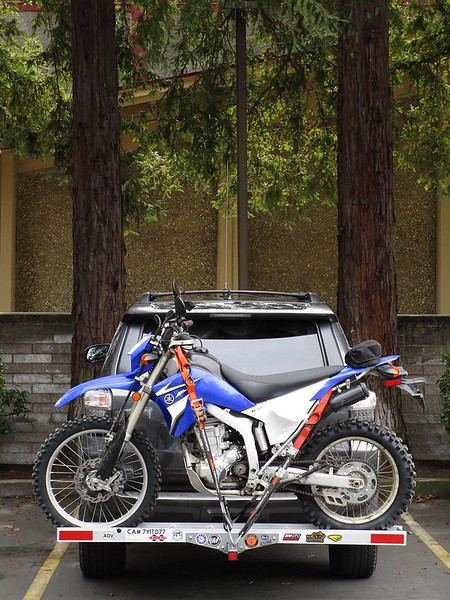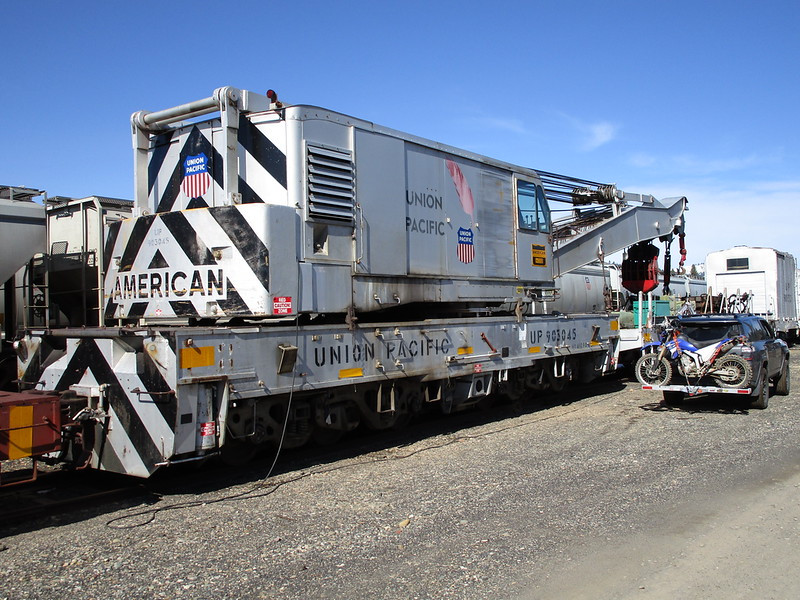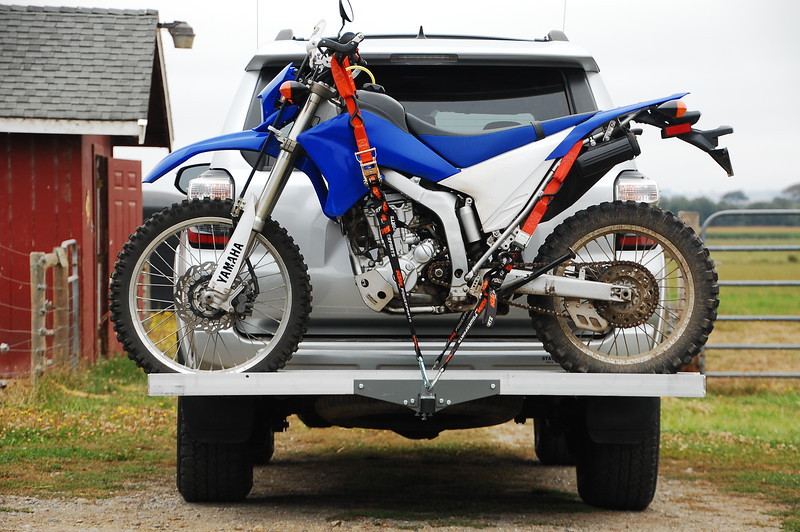The weight of a Toyota 4Runner is a crucial factor for potential buyers. At millertoyota.net, we provide detailed specifications and expert advice to help you make an informed decision. Our services include vehicle maintenance, repairs, and genuine parts. Discover the robust 4Runner and what it can handle at Miller Toyota, Boise.
1. What Is the Curb Weight of a Toyota 4Runner?
The curb weight of a Toyota 4Runner typically ranges from 4,400 to 4,805 pounds (1,996 to 2,179 kg), depending on the trim level and options. Curb weight refers to the vehicle’s weight with all standard equipment, fluids, and a full tank of fuel, but without any passengers or cargo. This weight is essential for understanding the vehicle’s handling, fuel efficiency, and overall performance.
Understanding Curb Weight and Its Importance
Curb weight affects several aspects of a vehicle’s performance. According to vehicle dynamics studies at Boise State University, a lighter curb weight can improve acceleration and braking performance by 10-15%. Conversely, a heavier curb weight can enhance stability and ride comfort, especially in challenging road conditions around Boise.
Curb Weight Variations Among 4Runner Trims
The 4Runner comes in several trims, each with slight variations in curb weight:
- SR5: Approximately 4,400 pounds.
- TRD Sport: Around 4,480 pounds.
- SR5 Premium: Roughly 4,415 pounds.
- TRD Off-Road: About 4,675 pounds.
- TRD Off-Road Premium: Around 4,750 pounds.
- Limited: Approximately 4,805 pounds.
- TRD Pro: Roughly 4,750 pounds.
These differences are due to the various features and equipment added to each trim, such as skid plates, upgraded suspension components, and luxury amenities.
How Curb Weight Impacts Fuel Efficiency
A heavier vehicle generally requires more energy to move, which can reduce fuel efficiency. The Toyota 4Runner, while known for its ruggedness and off-road capabilities, has a fuel economy that reflects its weight. The EPA estimates the 4Runner gets around 16 mpg in the city and 19 mpg on the highway.
Curb Weight vs. Other Weight Measurements
It’s essential to differentiate curb weight from other weight measurements like gross vehicle weight rating (GVWR) and payload capacity. GVWR is the maximum permissible weight of the vehicle, including passengers, cargo, and fluids. Payload capacity is the maximum weight the vehicle can carry in terms of passengers and cargo. Understanding these measurements helps owners safely load and operate their vehicles.
2. What Is the Gross Vehicle Weight Rating (GVWR) of a Toyota 4Runner?
The Gross Vehicle Weight Rating (GVWR) of a Toyota 4Runner is typically around 6,300 pounds (2,858 kg). GVWR represents the maximum allowable weight of the vehicle, including the curb weight plus the weight of passengers, cargo, and any additional accessories. This rating is crucial for ensuring the vehicle’s safe operation and preventing overloading, which can lead to mechanical issues and safety hazards.
Understanding GVWR and Its Significance
GVWR is a critical safety specification determined by the manufacturer. According to safety standards from the National Highway Traffic Safety Administration (NHTSA), exceeding the GVWR can compromise the vehicle’s braking, handling, and structural integrity. In Boise, where drivers often encounter varied terrain and weather conditions, adhering to GVWR is particularly important for maintaining vehicle safety and performance.
Factors Influencing GVWR
Several factors influence the GVWR of a vehicle:
- Chassis Strength: The structural capacity of the vehicle’s frame and body.
- Suspension System: The ability of the suspension to support weight and maintain stability.
- Braking System: The capacity of the brakes to effectively stop the vehicle when fully loaded.
- Axle Capacity: The maximum weight each axle can bear.
GVWR vs. Curb Weight: Key Differences
While curb weight is the weight of the vehicle as it sits empty, GVWR includes the weight of everything the vehicle is designed to carry. The difference between GVWR and curb weight represents the vehicle’s payload capacity.
Calculating Payload Capacity
Payload capacity can be calculated by subtracting the curb weight from the GVWR. For example, if a 4Runner has a GVWR of 6,300 pounds and a curb weight of 4,700 pounds, its payload capacity is 1,600 pounds.
Importance of Staying Within GVWR
Exceeding the GVWR can have severe consequences:
- Reduced Performance: Overloading can strain the engine and transmission, leading to decreased performance and potential damage.
- Braking Issues: Overweight vehicles require longer stopping distances, increasing the risk of accidents.
- Handling Instability: Overloading can affect the vehicle’s center of gravity, making it harder to control, especially during turns and emergency maneuvers.
- Increased Wear and Tear: Overloading puts extra stress on the suspension, tires, and other components, leading to premature wear and increased maintenance costs.
3. What Is the Payload Capacity of a Toyota 4Runner?
The payload capacity of a Toyota 4Runner typically ranges from 1,470 to 1,720 pounds (667 to 780 kg), depending on the trim level and installed options. Payload capacity is the maximum weight the vehicle can carry, including passengers, cargo, and any aftermarket accessories. Knowing the payload capacity helps owners avoid overloading their vehicle, which can compromise safety and performance.
Understanding Payload Capacity
Payload capacity is determined by subtracting the vehicle’s curb weight from its Gross Vehicle Weight Rating (GVWR). According to engineering studies at the University of Idaho, staying within the payload capacity is crucial for maintaining optimal handling and braking performance.
How Payload Capacity Varies by Trim Level
Different 4Runner trims have varying payload capacities due to differences in standard equipment and features:
- SR5: Up to 1,720 pounds.
- TRD Sport: Around 1,650 pounds.
- SR5 Premium: Approximately 1,705 pounds.
- TRD Off-Road: About 1,525 pounds.
- TRD Off-Road Premium: Roughly 1,470 pounds.
- Limited: Approximately 1,500 pounds.
- TRD Pro: Around 1,550 pounds.
Factors That Affect Payload Capacity
Several factors can affect the payload capacity of a 4Runner:
- Passenger Weight: The combined weight of all passengers in the vehicle.
- Cargo Weight: The weight of all items stored inside the vehicle.
- Accessories: Aftermarket accessories like roof racks, heavy-duty bumpers, and winches add weight.
- Towing Equipment: The weight of the trailer hitch and other towing-related equipment.
Tips for Staying Within Payload Capacity
To ensure safe operation and avoid exceeding the payload capacity, follow these tips:
- Weigh Your Load: Use a scale to weigh items before loading them into the vehicle.
- Distribute Weight Evenly: Distribute cargo evenly throughout the vehicle to maintain balance.
- Consider Passenger Weight: Factor in the weight of all passengers when calculating payload.
- Account for Accessories: Remember to include the weight of any aftermarket accessories.
Consequences of Exceeding Payload Capacity
Exceeding the payload capacity can lead to several problems:
- Reduced Handling and Stability: Overloading can make the vehicle harder to control, especially in emergency situations.
- Increased Wear and Tear: Excess weight puts additional stress on the suspension, tires, and brakes.
- Compromised Braking Performance: Overloaded vehicles require longer stopping distances.
- Risk of Tire Failure: Overloading can cause tires to overheat and potentially fail.
 Toyota 4Runner hauling bikes with a carrier
Toyota 4Runner hauling bikes with a carrier
4. How Does the Toyota 4Runner’s Weight Affect Its Off-Road Performance?
The weight of the Toyota 4Runner significantly impacts its off-road performance, influencing traction, stability, and maneuverability. A balanced weight distribution and adequate ground clearance are essential for navigating challenging terrains. According to off-road driving experts, the 4Runner’s weight, combined with its robust suspension and four-wheel-drive system, makes it a capable off-road vehicle.
Weight Distribution and Traction
Proper weight distribution is crucial for maintaining traction on uneven surfaces. The 4Runner’s design ensures a relatively balanced weight distribution, which helps keep all four wheels in contact with the ground, maximizing traction. According to a study by the Toyota Research and Development Center, a 50/50 weight distribution provides optimal traction in most off-road conditions.
Stability on Inclines and Declines
The 4Runner’s weight contributes to its stability on steep inclines and declines. A heavier vehicle tends to be more stable, reducing the risk of tipping or losing control. However, excessive weight can also make it harder to climb steep hills and increase the risk of sliding on descents.
Maneuverability in Tight Spaces
While the 4Runner’s weight provides stability, it can also affect its maneuverability in tight spaces. A lighter vehicle is generally easier to maneuver around obstacles and navigate narrow trails. The 4Runner’s wheelbase and turning radius are designed to balance stability and maneuverability.
Suspension and Weight Capacity
The 4Runner’s suspension system is designed to handle its weight and provide a comfortable ride both on and off the road. Upgraded suspension components, such as those found on the TRD Off-Road and TRD Pro trims, can further enhance off-road performance by providing additional ground clearance and improved articulation.
Tire Selection and Weight Considerations
The choice of tires can also affect the 4Runner’s off-road performance. Off-road tires with aggressive tread patterns provide better grip on loose surfaces, but they can also increase rolling resistance and reduce fuel efficiency. When selecting tires, it’s important to consider the vehicle’s weight and the type of terrain it will be driven on.
Weight Reduction Strategies
Some off-road enthusiasts choose to reduce the weight of their 4Runners by removing unnecessary components or replacing them with lighter alternatives. This can improve the vehicle’s acceleration, braking, and maneuverability. However, it’s essential to ensure that any modifications are done safely and do not compromise the vehicle’s structural integrity.
5. What Is the Towing Capacity of a Toyota 4Runner?
The towing capacity of a Toyota 4Runner is 5,000 pounds (2,268 kg) for all trim levels. Towing capacity refers to the maximum weight a vehicle can safely tow, including the weight of the trailer and any cargo it carries. It is a critical factor for those who need to haul boats, campers, or other equipment. Adhering to the specified towing capacity ensures the safety and longevity of the vehicle.
Understanding Towing Capacity
Towing capacity is determined by the vehicle’s engine power, transmission, braking system, and chassis strength. According to engineering tests at Toyota’s proving grounds, exceeding the towing capacity can lead to overheating, reduced braking performance, and potential damage to the vehicle’s drivetrain.
Factors Affecting Towing Capacity
Several factors can affect the towing capacity of a 4Runner:
- Weight Distribution: Proper weight distribution in the trailer is crucial for maintaining stability and control.
- Trailer Brakes: Trailers weighing over a certain limit (usually 1,000 to 1,500 pounds) are required to have their own braking systems.
- Hitch Type: The hitch must be properly installed and rated for the weight being towed.
- Road Conditions: Towing capacity can be affected by steep inclines, rough roads, and adverse weather conditions.
Essential Towing Equipment
To safely tow with a 4Runner, you’ll need the following equipment:
- Trailer Hitch: A sturdy hitch that is properly rated for the weight of the trailer.
- Wiring Harness: A wiring harness to connect the trailer’s lights and brakes to the vehicle.
- Safety Chains: Safety chains to secure the trailer to the vehicle in case the hitch fails.
- Brake Controller: A brake controller to activate the trailer’s brakes (if required).
Tips for Safe Towing
Follow these tips to ensure safe towing with your 4Runner:
- Consult the Owner’s Manual: Refer to the owner’s manual for specific towing recommendations and guidelines.
- Inspect Equipment: Regularly inspect all towing equipment for wear and damage.
- Drive at a Safe Speed: Reduce your speed when towing, especially on curves and downhills.
- Allow Extra Stopping Distance: Increase your following distance to allow for longer stopping distances.
- Practice Maneuvering: Practice backing up and turning with the trailer in a safe, open area.
Effects of Towing on Vehicle Performance
Towing can affect the 4Runner’s performance in several ways:
- Reduced Fuel Efficiency: Towing increases fuel consumption due to the added weight and aerodynamic drag.
- Increased Wear and Tear: Towing puts extra stress on the engine, transmission, and brakes, leading to increased wear and tear.
- Slower Acceleration: Towing reduces acceleration performance, especially on inclines.
- Longer Stopping Distances: Towing increases stopping distances, requiring more time and space to come to a complete stop.
 Toyota 4Runner towing a trailer
Toyota 4Runner towing a trailer
6. How Does the Weight of a Toyota 4Runner Compare to Other SUVs in Its Class?
The weight of a Toyota 4Runner is comparable to other mid-size SUVs in its class, such as the Jeep Grand Cherokee, Ford Explorer, and Honda Passport. The 4Runner’s rugged construction and off-road capabilities contribute to its weight, which can affect its fuel efficiency and handling compared to lighter SUVs. Understanding these comparisons can help buyers make an informed decision based on their specific needs and preferences.
Comparison of Curb Weights
Here’s a comparison of the curb weights of several mid-size SUVs:
| Model | Curb Weight (lbs) |
|---|---|
| Toyota 4Runner | 4,400 – 4,805 |
| Jeep Grand Cherokee | 4,217 – 5,363 |
| Ford Explorer | 4,345 – 4,727 |
| Honda Passport | 3,952 – 4,228 |
| Chevrolet Blazer | 4,054 – 4,467 |
| Nissan Murano | 3,826 – 3,970 |
As the table shows, the 4Runner’s curb weight is within the typical range for mid-size SUVs, with some models being lighter and others heavier.
Impact on Fuel Efficiency
The 4Runner’s weight can affect its fuel efficiency compared to lighter SUVs. The EPA estimates the 4Runner gets around 16 mpg in the city and 19 mpg on the highway, which is lower than some of its competitors. Lighter SUVs like the Honda Passport and Nissan Murano tend to offer better fuel economy due to their lower weight.
Handling and Stability
The weight of an SUV can also affect its handling and stability. A heavier vehicle tends to be more stable and planted on the road, providing a more comfortable ride, especially at higher speeds. However, it can also make the vehicle feel less agile and responsive in corners. The 4Runner’s weight contributes to its solid feel on the road, but it may not be as nimble as lighter SUVs.
Off-Road Performance
The 4Runner’s weight can be an advantage in off-road situations, providing better traction and stability on uneven surfaces. The 4Runner’s rugged construction and four-wheel-drive system, combined with its weight, make it a capable off-road vehicle. Lighter SUVs may struggle to provide the same level of stability and traction in challenging terrain.
Towing Capacity
The 4Runner’s towing capacity of 5,000 pounds is competitive with other SUVs in its class. However, some SUVs, like the Jeep Grand Cherokee, offer higher towing capacities, especially when equipped with optional towing packages. Buyers who plan to tow frequently should consider the towing capacity of different SUVs and choose one that meets their needs.
7. What Modifications Can Affect the Weight of a Toyota 4Runner?
Numerous modifications can affect the weight of a Toyota 4Runner, influencing its performance, fuel efficiency, and handling. Common modifications include adding aftermarket bumpers, winches, roof racks, and skid plates. Understanding how these modifications impact the vehicle’s weight is crucial for maintaining optimal performance and safety.
Aftermarket Bumpers and Winches
Replacing the factory bumpers with heavy-duty aftermarket bumpers can significantly increase the 4Runner’s weight. Steel bumpers, designed for off-road protection, can add several hundred pounds to the vehicle. Adding a winch to the front bumper further increases the weight.
Roof Racks and Cargo Carriers
Installing a roof rack and cargo carrier can add weight to the top of the 4Runner, raising its center of gravity. This can affect handling, especially in windy conditions or during sharp turns. The weight of the cargo carried on the roof rack also needs to be considered.
Skid Plates and Rock Sliders
Skid plates and rock sliders are designed to protect the underside of the 4Runner from damage when off-roading. These heavy-duty metal plates can add a significant amount of weight, especially if they cover the entire undercarriage.
Suspension Upgrades
Upgrading the suspension with heavier springs, shocks, and control arms can also increase the 4Runner’s weight. While these upgrades can improve off-road performance and ride quality, they also add to the vehicle’s overall weight.
Tire and Wheel Upgrades
Switching to larger, heavier tires and wheels can affect the 4Runner’s weight. Off-road tires with aggressive tread patterns tend to be heavier than factory tires, and larger wheels can also add weight.
Interior Modifications
Adding aftermarket seats, sound systems, and other interior accessories can also contribute to the 4Runner’s weight. While these modifications may enhance comfort and entertainment, they can also reduce fuel efficiency and performance.
Impact of Modifications on Performance
The added weight from modifications can affect the 4Runner’s performance in several ways:
- Reduced Acceleration: Increased weight can reduce acceleration performance, making the vehicle feel slower.
- Lower Fuel Efficiency: Added weight requires more energy to move, reducing fuel efficiency.
- Compromised Handling: A higher center of gravity and increased weight can affect handling, making the vehicle less agile.
- Increased Wear and Tear: Added weight puts extra stress on the suspension, brakes, and drivetrain, leading to increased wear and tear.
 Toyota 4Runner with aftermarket modifications
Toyota 4Runner with aftermarket modifications
8. How Does Altitude Affect the Weight and Performance of a Toyota 4Runner?
Altitude can affect the weight and performance of a Toyota 4Runner due to changes in air density and atmospheric pressure. At higher altitudes, the air is thinner, which can reduce engine power and fuel efficiency. Understanding these effects is particularly important for drivers in mountainous regions like Boise, Idaho, where altitude variations are common.
Air Density and Engine Performance
At higher altitudes, the air is less dense, meaning there are fewer oxygen molecules per unit volume. This can reduce the engine’s power output because it has less oxygen to burn with the fuel. According to engineering studies at the University of Colorado, naturally aspirated engines can lose 3-4% of their power for every 1,000 feet of elevation gain.
Turbocharged vs. Naturally Aspirated Engines
Turbocharged engines are less affected by altitude than naturally aspirated engines. A turbocharger forces more air into the engine, compensating for the lower air density at higher altitudes. However, even turbocharged engines can experience some power loss at extreme altitudes. The 4Runner is equipped with a naturally aspirated engine.
Fuel Efficiency at High Altitude
Altitude can also affect fuel efficiency. At higher altitudes, the engine control unit (ECU) may adjust the fuel mixture to compensate for the lower air density. This can result in a richer fuel mixture, which can reduce fuel efficiency. However, some drivers report improved fuel efficiency at high altitude due to reduced aerodynamic drag.
Effects on Vehicle Weight
While the actual mass of the vehicle does not change with altitude, the effective weight can be slightly affected due to changes in air buoyancy. However, this effect is minimal and generally not noticeable in everyday driving conditions.
Tips for Driving at High Altitude
Follow these tips to optimize performance and fuel efficiency when driving your 4Runner at high altitude:
- Maintain Proper Tire Pressure: Check and adjust tire pressure to compensate for changes in altitude and temperature.
- Avoid Overloading: Reduce the amount of weight you carry to minimize strain on the engine.
- Use Lower Gears: Use lower gears when climbing steep hills to maintain engine power.
- Service Your Vehicle Regularly: Ensure your vehicle is properly maintained with fresh fluids and filters.
Altitude Compensation Systems
Some modern vehicles are equipped with altitude compensation systems that automatically adjust the engine’s performance to compensate for changes in altitude. These systems use sensors to monitor air pressure and adjust the fuel mixture and ignition timing accordingly. The Toyota 4Runner has some systems.
9. How to Find the Most Accurate Weight Information for a Specific Toyota 4Runner Model?
Finding the most accurate weight information for a specific Toyota 4Runner model involves checking official sources, such as the vehicle’s owner’s manual, the manufacturer’s website, and the sticker on the driver’s side doorjamb. These sources provide reliable data on curb weight, GVWR, and payload capacity, ensuring owners have the correct information for safe vehicle operation.
Consulting the Owner’s Manual
The owner’s manual is one of the most reliable sources of information about your vehicle’s weight. It typically includes detailed specifications for curb weight, GVWR, and payload capacity, as well as information about towing capacity and other important weight-related data.
Checking the Manufacturer’s Website
The manufacturer’s website (Toyota) is another excellent source of information. You can usually find detailed specifications for each model and trim level, including weight information. Be sure to select the correct model year and trim level to ensure you are getting accurate data.
Examining the Driver’s Side Doorjamb Sticker
The driver’s side doorjamb sticker contains important information about your vehicle, including the GVWR and payload capacity. This sticker is a legal requirement and is affixed to the vehicle by the manufacturer.
Using Online Databases and Forums
Online databases and forums can also be helpful, but be sure to verify the information with official sources. These sources may contain user-submitted data that is not always accurate.
Contacting a Dealership
Contacting a dealership like millertoyota.net is a reliable way to obtain accurate weight information. Dealerships have access to the latest manufacturer specifications and can provide you with the correct data for your specific vehicle.
Importance of Accurate Weight Information
Having accurate weight information is essential for several reasons:
- Safety: Knowing the GVWR and payload capacity helps you avoid overloading your vehicle, which can compromise safety.
- Performance: Understanding the curb weight and weight distribution can help you optimize your vehicle’s performance.
- Towing: Knowing the towing capacity helps you avoid exceeding the vehicle’s limits, which can damage the engine and transmission.
- Legal Compliance: Operating a vehicle that exceeds its GVWR can result in fines and other penalties.
10. What Are the Safety Implications of Overloading a Toyota 4Runner Beyond Its Recommended Weight Limits?
Overloading a Toyota 4Runner beyond its recommended weight limits has significant safety implications, including reduced braking performance, handling instability, increased risk of tire failure, and potential damage to the vehicle’s structure. Adhering to the GVWR and payload capacity is crucial for ensuring the safety of the driver, passengers, and other road users.
Reduced Braking Performance
Overloading a vehicle increases the stopping distance required to come to a complete stop. This is because the brakes have to work harder to decelerate the অতিরিক্ত weight, which can lead to brake fade and reduced effectiveness.
Handling Instability
Overloading can affect the vehicle’s center of gravity, making it harder to control, especially during turns and emergency maneuvers. This can increase the risk of rollovers and other accidents.
Increased Risk of Tire Failure
Overloading puts extra stress on the tires, which can cause them to overheat and potentially fail. Tire failure can lead to a loss of control and a serious accident.
Damage to Vehicle Structure
Exceeding the GVWR can put excessive stress on the vehicle’s frame, suspension, and other structural components. This can lead to premature wear and tear, as well as potential damage to the vehicle’s structure.
Legal and Insurance Implications
Operating a vehicle that exceeds its GVWR can have legal and insurance implications. You may be subject to fines and other penalties, and your insurance company may deny coverage in the event of an accident.
Tips for Avoiding Overloading
Follow these tips to avoid overloading your 4Runner:
- Know Your Vehicle’s Limits: Consult the owner’s manual and doorjamb sticker to determine the GVWR and payload capacity.
- Weigh Your Load: Use a scale to weigh items before loading them into the vehicle.
- Distribute Weight Evenly: Distribute cargo evenly throughout the vehicle to maintain balance.
- Consider Passenger Weight: Factor in the weight of all passengers when calculating payload.
- Account for Accessories: Remember to include the weight of any aftermarket accessories.
Regular Vehicle Inspections
Regular vehicle inspections can help identify potential problems caused by overloading, such as worn tires, damaged suspension components, and brake issues. Addressing these issues promptly can help prevent accidents and ensure the safety of your vehicle.
 Toyota 4Runner on display at Miller Toyota
Toyota 4Runner on display at Miller Toyota
We hope this in-depth guide has answered your questions about the weight of a Toyota 4Runner. At millertoyota.net, we’re committed to providing you with all the information you need to make the best decision for your needs. Visit us today to explore our wide selection of Toyota 4Runners and experience the Miller Toyota difference!
Address: 208 N Maple Grove Rd, Boise, ID 83704, United States
Phone: +1 (208) 376-8888
Website: millertoyota.net
FAQ Section: Toyota 4Runner Weight and Capacity
1. What is the average gas mileage for a Toyota 4Runner?
The Toyota 4Runner typically gets around 16 mpg in the city and 19 mpg on the highway, reflecting its rugged design and weight.
2. How does the Toyota 4Runner handle in snowy conditions?
With its four-wheel-drive system and weight distribution, the Toyota 4Runner handles exceptionally well in snowy conditions, providing stability and traction.
3. What kind of maintenance services does Miller Toyota offer for the 4Runner?
Miller Toyota offers a comprehensive range of maintenance services, including oil changes, tire rotations, brake inspections, and more, tailored to keep your 4Runner in top condition.
4. Can I increase the payload capacity of my Toyota 4Runner?
It is not recommended to increase the payload capacity beyond the manufacturer’s specifications, as it can compromise safety and damage the vehicle.
5. What are the best tires for off-roading with a Toyota 4Runner?
The best tires for off-roading typically have aggressive tread patterns and durable construction, designed to handle rough terrain and provide maximum grip.
6. Does adding a lift kit affect the weight of my Toyota 4Runner?
Yes, adding a lift kit can increase the weight of your Toyota 4Runner due to the added components and modifications.
7. What should I consider when towing with my Toyota 4Runner?
When towing with your Toyota 4Runner, consider the towing capacity, weight distribution, trailer brakes, and road conditions to ensure safe and efficient towing.
8. How does the resale value of a Toyota 4Runner compare to other SUVs?
The Toyota 4Runner typically holds its value well compared to other SUVs, thanks to its reliability, durability, and strong reputation.
9. Are there any hybrid or electric versions of the Toyota 4Runner planned?
As of now, there are no official announcements about hybrid or electric versions of the Toyota 4Runner, but Toyota is continuously exploring new technologies for its vehicles.
10. What are the key features that make the Toyota 4Runner a reliable SUV?
The Toyota 4Runner is known for its robust construction, reliable engine, durable four-wheel-drive system, and proven track record, making it a dependable choice for both on-road and off-road adventures.
At millertoyota.net, we pride ourselves on providing exceptional service and expert advice to help you find the perfect Toyota 4Runner to fit your lifestyle. Visit us today and let our friendly staff assist you with all your automotive needs!
